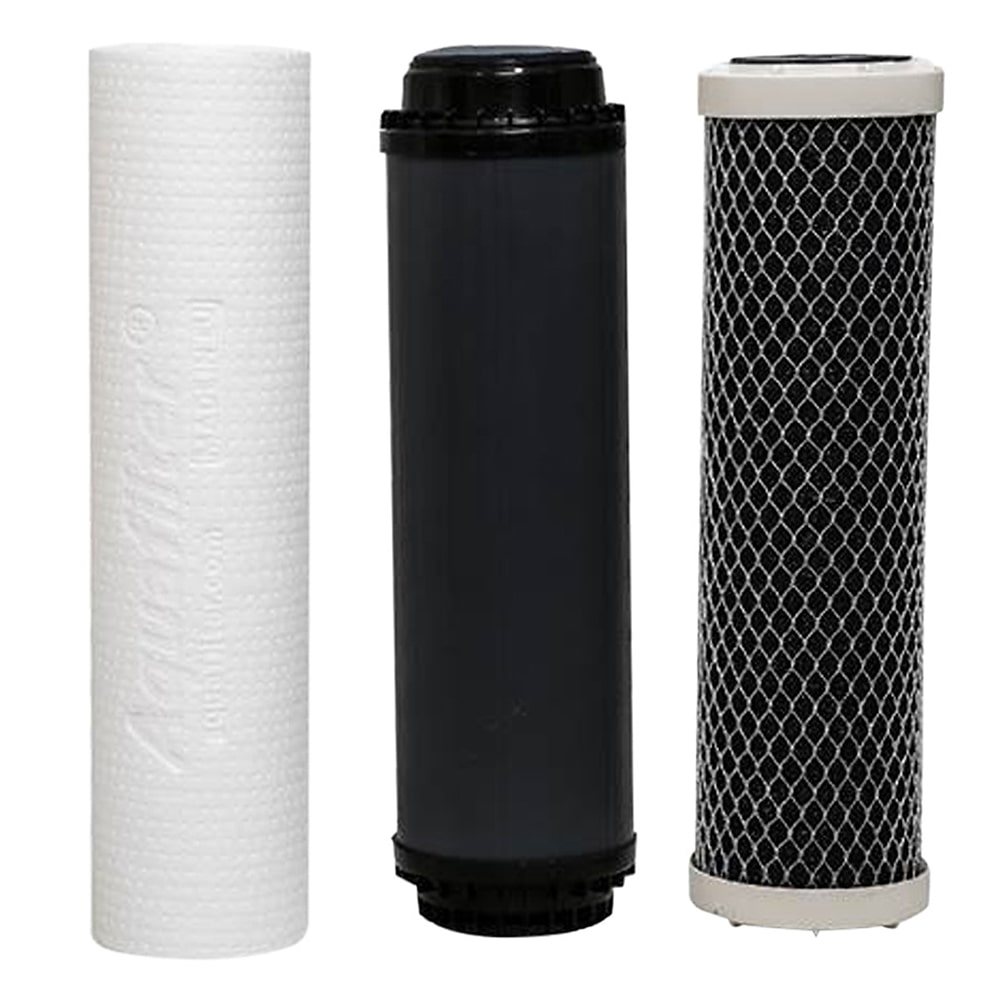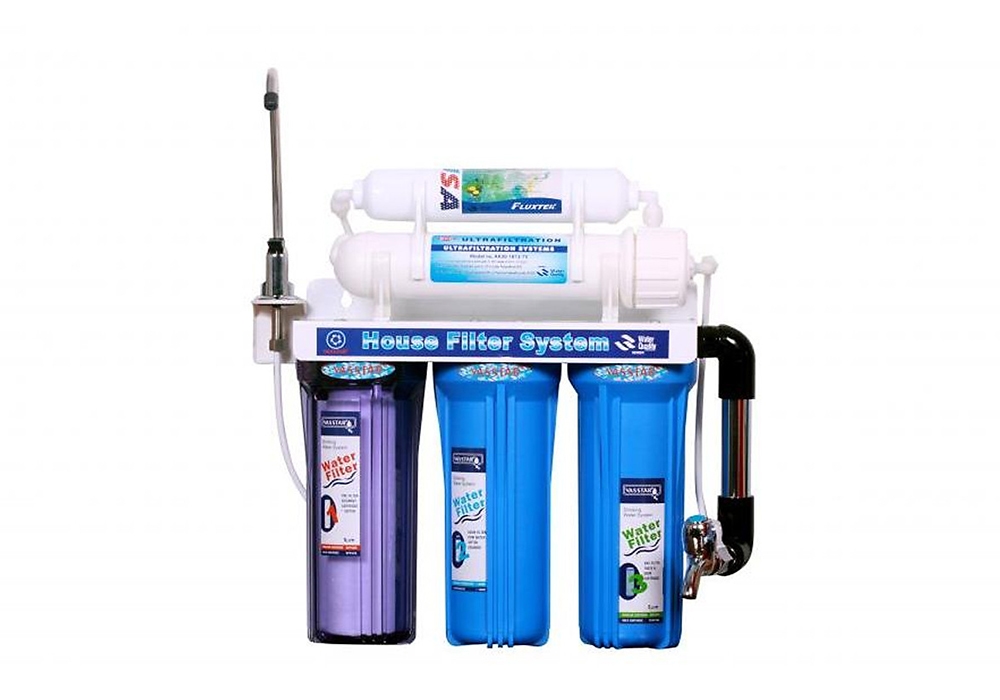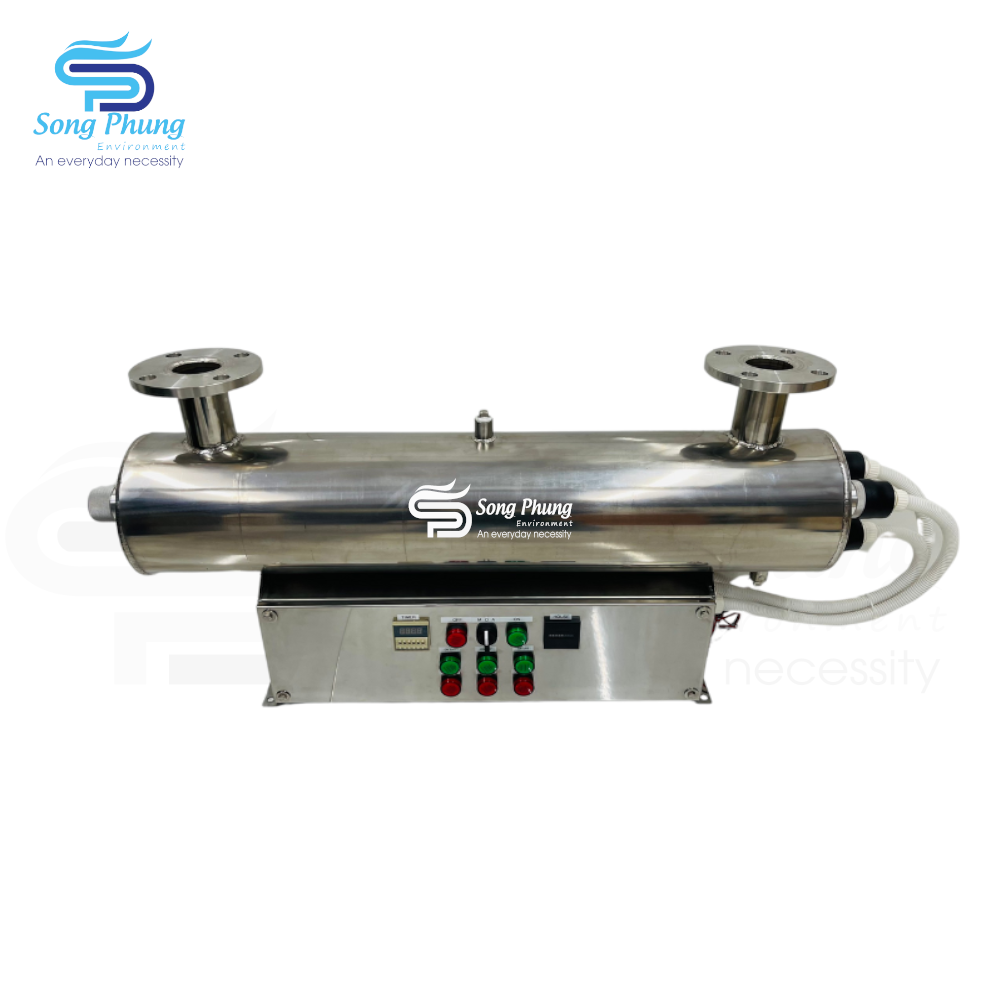No one wants to sip on a gross-tasting drink—certainly not when it’s the water from the sink. In its purest form, water shouldn’t taste like anything. But sometimes, it can have a weird flavor that may take your taste buds for a spin.

What Gives Water Its Flavor?
Pure water has no taste, odor, or color. But we rarely drink water that’s pure. The type we often drink comprises of tons of minerals and inorganic compounds that can give it a distinct taste. It typically contains various natural dissolved minerals, including calcium, magnesium, sodium, potassium, and hydrogen carbonate, that can influence the water’s flavor.
Other factors like trace impurities, the water’s pH level, source (such as groundwater, spring water, or tap water), temperature, and any additives can all impact the overall taste of the water we consume. Even the material of the container in which water is stored or passes through can sometimes influence its flavor.
Possible Causes of Unpleasant Tastes in Tap Water
So, why does your tap water tase…like something else? Well, there could be dozens of reasons, including its mineral and chemical content, the presence of heavy metals, etc. Let’s dive into some common reasons for bad-tasting tap water—and their solutions.
1. My Tap Water Tastes Like Bleach
In most cases, water that tastes like bleach contains chlorine or other chemical disinfectants. Chlorine, in particular, is added to 98% of U.S. public water systems to kill bacteria, viruses, parasites, and other potentially deadly microbes before the water is sent to your home. But if you have a private well, you may have had it shock-chlorinated, potentially leaving behind a strong bleach taste unless the chlorine is pumped out adequately.
Small amounts of chlorine (levels below four mg/L) in water aren’t a health hazard, but concentrations as small as one mg/L can leave a bleach scent or taste in your water. If the taste is particularly strong, it may be due to your water provider adding extra chlorine to compensate if the water needs to travel longer distances.
As a result, people living closer to the treatment plant will have more chlorine in their water and, therefore, a more pungent taste. Furthermore, first thing in the morning and early evening is peak time for water use. This means the water comes more quickly from the treatment plant and may contain more chlorine.
If you have a private well, it may have experienced severe bacterial contamination issues, requiring you to use more chlorine than usual to disinfect it.
Solution: If your water tastes like bleach, a carbon water filter like our CF1 Whole-House Water Filter can remove the excess chlorine and significantly improve the water’s taste and odor. The CF1 doesn’t only remove chlorine and chloramine known to cause this chemical-like taste in water, though. It also filters out scores of other potential contaminants, such as disinfection byproducts (DBPs), volatile organic compounds (VOCs), and trihalomethanes (THMs).
2. My Tap Water Has a Metallic Flavor
A metallic taste is almost always a sign your tap water contains metals—either from your pipes or public service lines. Many pipelines and plumbing components are made from iron, manganese, copper, and lead, which can corrode over time and leach different metals into your drinking water. Acidic water (i.e., water with a pH below 7) causes pipes to corrode quickly, giving the water a sour, tangy, or metallic taste.
Usually, iron tastes like blood, and copper has a slightly bitter or sweet flavor. However, lead is tasteless. While most of these metals aren’t harmful in small doses, they can bioaccumulate over time and cause various health problems in people who ingest them. Trace amounts of lead, in particular, can be toxic to adults and children, even in tiny doses.
Solution: If you live in an older home, check what materials your pipes are made of and consider whether any need to be replaced or if water treatment alone will address the problem. Even in newer homes, high levels of zinc or manganese in your water supply may affect your water’s taste.
A reverse osmosis system or carbon water filter can remove most metals from your water. If your water is acidic, a pH Neutralizer can help raise the water’s pH to a neutral level to reduce the strange taste and lower the corrosive effects on your pipes and plumbing.
3. My Tap Water Has a Bitter Taste
Two common reasons your water tastes bitter (somewhat like baking soda or some medicines) are increased levels of copper and zinc, or the water is alkaline (having a pH above 7). Copper and zinc are naturally occurring metal elements often used to manufacture metal fittings, pipes, and storage tanks in many plumbing systems. As water passes through or sits in these components, tiny metal particles can break away from the walls and enter the water.
While some copper is ideal for good health, too much can be detrimental. You may taste it in your water once it reaches 1.3 mg/L, although it is not a health risk until it exceeds 60 mg/L. Zinc is usually not a health hazard—at least at the levels typically found in drinking water. At extremely high concentrations (675 mg/l and above), however, it can act as an intestinal irritant, causing nausea and vomiting.
A high pH level may also be responsible for the bitter taste. Potentially harmful substances, including but not limited to medications, pesticides, and industrial chemicals, can raise the water’s pH, making it more basic or alkaline and bitter.
Solution: If you are concerned about bitterness in tap water, a reverse osmosis system or carbon water filter can eliminate copper and zinc. These filters can also remove many minerals and impurities that raise the pH level, making the water less alkaline and thus reducing bitterness.
4. My Tap Water Tastes Salty
Your water should taste fresh, not like it came straight from the sea. But if the latter is true, it probably contains lots of dissolved chloride ions, including sodium chloride (your everyday table salt), potassium chloride, or calcium chloride. Common causes for chloride ions in your water include seawater or industrial waste entering your water supply or rainwater or melted snow carrying road salts into local reservoirs.
Although chloride ions are the likely culprit for salty water, sulfates can also play a role. Many sulfates occur naturally in soil and rocks, so as groundwater moves through the earth, these sulfates can enter the water. Furthermore, if sewage leaks into the water, it can cause sodium and chloride levels to spike, making the water even saltier.
If you have a salt-based water softener and notice that your water tastes salty, something may be wrong with the system. Unlike salt-free softeners, salt-based systems use sodium ions in the softening process, but there shouldn’t be enough left behind that you taste them. But if you think your water softener is the culprit, contact a professional to take a look at it. If you are the DIY type, consider these possible issues:
- Incorrect Regeneration Settings: If the regeneration settings are “off,” the water softener might use too much salt, resulting in overly salty water.
- Resin Contamination: When contaminants build up on the resin beads, the water softener can’t effectively remove sodium, leading to a salty taste in the water.
- Improper Rinse Cycle: Inadequate rinsing after regeneration can leave salt in the resin, causing the water to taste salty.
- Salt Bridges: A layer of solidified salt can form, blocking the brine tank and disrupting the softening process, potentially causing salty water.
- Blockage in Brine Line: A blockage in the brine line can impede salt dissolution, affecting regeneration and causing the water to taste salty.
Solutions: Chloride ions can be removed from water through reverse osmosis (RO), distillation, and deionization (DI). Reverse osmosis is the best process to remove salts like chloride from water. RO systems force water through a semipermeable membrane that blocks larger ions like chloride but allows water molecules to pass through. This produces purified water with reduced chloride content.
Distillation involves heating water to create steam and condensing the moisture into liquid form. This process separates the water from impurities, including chloride ions left behind as the steam rises. However, home distillation systems can only produce relatively small amounts of water daily and are more costly than reverse osmosis systems because they use electricity to boil the water.
Deionization (Demineralization or DI), on the other hand, uses adsorption to reduce chloride ions in water. DI systems use anion-exchange resins to attract and grab onto not only chloride but also other types of anions in the water. These resins capture sulfate ions more, so if there are a lot of sulfates in the water, they might not be as good at removing chloride.
5. My Tap Water Tastes Like Rotten Eggs
When tap water suddenly smells and tastes like rotten eggs, it’s likely because it contains hydrogen sulfide. Certain bacteria in your water or water system use sulfur for energy and release hydrogen sulfide gas as a byproduct. This unleashes that unmistakable rotten egg aroma. Industrial waste or farm runoff can also introduce sulfates into groundwater or surface water sources.
When this taste starts showing up in your hot water, the prime suspect is likely your water heater. The heater has an element that helps protect it from corrosion. However, this element can give off a rotten egg smell as it breaks down over time. A plumber will be able to tell you if this is the problem. If not, stop drinking the water immediately and contact your local health agency.
If you’ve ruled out your drain and water heater, pour some water into a narrow glass, step away from the sink, give it a swirl, and sniff. If the water has an odor and taste, the natural groundwater in your well may stimulate hydrogen sulfide-producing bacterial activity.
This could be due to a problematic or poorly positioned septic tank close to your well. Or, inadequate wellhead protection may let surface water contamination mix in, promoting the growth of bacteria. If you’re on a public water supply and your water smells like rotten eggs (and you’ve ruled out your drain and water heater), stop using the water and contact your utility ASAP.
Solution: If you’ve determined the source of the rotten egg taste to be your well supply, shock chlorination is the recommended way to eliminate sulfate-reducing bacteria. Iron filters are also effective against sulfate-reducing bacteria. They work by removing hydrogen sulfide by oxidizing the gas and converting it into insoluble sulfur, which is then removed by the filtering process. These devices also remove iron and manganese. For those on city water, an activated carbon filter is ideal.
6. My Tap Water Tastes Like Gasoline or Diesel
The taste of petrol, diesel, or other solvents in tap water is often a sign of a leak or dangerous runoff entering your water supply. These chemicals can travel through plastic pipes from a fuel storage tank after a spill or a well absorbing runoff from nearby driveways or parking lots. It could also occur due to groundwater getting polluted by industrial discharge from local industries or factories. Ingesting petrochemicals and solvents can have adverse health impacts, including headaches, dizziness, nausea, and vomiting. Chronic exposure can lead to more severe complications.
Solution: Whatever the cause of this petroleum-like taste, stop drinking the water immediately and have it tested. Depending on the results, you should get your water utility or local health authority involved to see if a recent nearby fuel spill or runoff needs to be addressed at the source. Also, a plumber can help you find the cause of the problem and advise on what to do next. If the surrounding area is contaminated due to a chemical spill, any nearby plastic water pipes underground must be replaced with ones with protective coating.
7. My Tap Water Has an Earthy, Moldy, or Fishy Taste
That earthy or musty flavor usually comes from naturally occurring compounds and minerals in the water and almost always affects those on private well systems. Things like algae, organic matter, or minerals like iron and manganese can be the culprits behind this distinct dirt-like taste. These contaminants appear naturally in large water bodies but may grow in pipes or your sink.
The fishy taste, however, might stem from compounds like geosmin, produced by certain algae and bacteria. While most municipal water suppliers treat algae, the taste can unfortunately remain behind.
Solution: While these flavors aren’t usually harmful, they can affect your drinking experience. If the taste becomes too strong or unpleasant, consider using a water filter or contacting your local water provider. They might be able to shed light on what’s causing the taste and offer solutions to address it.
8. My Tap Water Tastes Sweet
Certain minerals, like potassium, magnesium, or calcium, can give water a slightly sweet flavor. It’s also possible there’s a slight imbalance in the mineral content of the water, which can alter its taste. Then again, water treated with certain chemicals, such as chlorine or chloramine, might have a flavor that some people perceive as sweet.
Solution: While slightly sugary-tasting water is generally safe for human consumption, it’s still a good idea to test your water’s pH levels, as imbalanced pH can affect water quality and cause aesthetic issues in your home. You might also need to get a test kit to check your water’s overall mineral concentration and for the presence of chlorine or chloramine.
If the results show minerals are present, you’ll need to figure out how to address them. For example, if your water supply has high levels of calcium, magnesium, and iron, you may need to invest in a water softener. An under-counter reverse osmosis system would be perfect for removing chlorine and chloramine. However, a whole-house carbon water filter would be an excellent alternative to eliminate them from the water running to your shower, water heater, and other areas in your home.
9. My Tap Water Has a Tart Aftertaste
The most common cause of a tart aftertaste in tap water is tannins, especially if the water appears yellow or brown. Tannins are organic compounds that can naturally occur in water sources, particularly in areas with high concentrations of decaying vegetation or organic matter.
These compounds can leach into water from soil, leaves, and other plant materials. When tannins are present in your water, they can impart flavors that range from slightly tangy or tart to bitter. This taste is often described as similar to the taste in certain teas or certain types of fruits.
Solution: If you suspect tannins are causing the tart aftertaste in your water, consider testing your water to confirm their presence. Water treatment methods such as activated carbon filtration or ion exchange can effectively remove tannins and improve the taste of your water. However, filters explicitly made for tannin removal are always a better choice.
Take our Softener and Tannin Removal System, for example. This whole-house system packs a state-of-the-art salt-based water softener and an efficient tannin removal filter in a single system to remove hardness and tannins from your water, respectively. That means you won’t have to purchase separate units to achieve the same results. Plus, the system won’t occupy as much space because it has a single-tank configuration.
Is It Safe to Drink Water That Tastes Weird?
As we mentioned earlier, the causes of funny-tasting water can vary, making it harder to know if it is unsafe to drink. Slight changes in taste usually don’t pose a threat. However, if the change is drastic and is accompanied by a strong odor, it could indicate something more serious and a sign to exercise caution.
An unusual taste could sometimes mean a change in water quality or potential contamination. And bear in mind that there are some contaminants in water you can’t taste—many of which can be incredibly dangerous if ingested.
If you notice a sudden and persistent change in the taste of your tap water, stop drinking the water immediately and consider taking the following steps:
- Check for Local Alerts: See if your local water utility or health department has issued any alerts about changes in water quality in your area. They may be able to provide information about any issues affecting your water supply.
- Run the Tap: Sometimes, the taste can be affected by stagnant water in your plumbing system. Running the tap for a minute or two can help clear residual water and improve the taste.
- Contact Authorities: If you’re on city water, reach out to your local water utility to report the issue and seek guidance. They can provide insights or arrange for water testing.
- Consider Water Testing: If you have persistent concerns, you can have your water tested by a certified laboratory to ensure it meets safety standards. You can also find an analysis of your community water through a water report from your local water supplier. However, if you are a private well owner, you are responsible for maintaining the quality and safety of your water supply. Having your water tested, at least annually, is an integral step in assuring you and your household have safe, great-tasting drinking water.
How Water Treatment Helps Improve the Taste of Tap Water
The best way to make tap water taste better is to install a filter or purifier to remove the contaminants most likely responsible for the weird taste. Typically, activated carbon filters, reverse osmosis systems, and UV water purification systems help remove aesthetic issues like color, taste, and smell from your water. Furthermore, a pH neutralizer can adjust the pH level of the water to improve its taste and make it more enjoyable to drink. Please note, however, that issues related to bacterial growth should always be eliminated via shock chlorination rather than continuously filtering the water.
Carbon Water Filters
Activated carbon filters work by using a special type of carbon that has been treated to create a large surface area with tiny pores. When water passes through the filter, these pores attract and trap various impurities. Chemicals and other contaminants get stuck in these pores, leaving the water cleaner and better-tasting.

The activated carbon acts like a sponge, pulling in contaminants as water flows through it. This process, known as adsorption, helps remove a wide range of pollutants from the water. However, while activated carbon filters effectively remove certain substances like chlorine and organic compounds, they may not be as efficient at addressing smaller microorganisms or heavy metals.
Reverse Osmosis (RO) Systems

A reverse osmosis (RO) system filters water through multiple stages, including reverse osmosis itself—where water is pushed through a special semipermeable membrane to eliminate total dissolved solids (TDS) and other elements altering the water’s taste. Along the way, a sediment filter rids the water of dirt, dust, and rust particles. A carbon filter eliminates volatile organic compounds (VOCs), chlorine, and other unwanted elements that might make your water taste or smell unpleasant. RO systems are top-tier filtration methods for removing harmful minerals, but they may eliminate beneficial minerals like calcium and magnesium.
Ultraviolet Purification

UV water purification systems harness the power of ultraviolet light to neutralize bacteria and viruses in your water supply, effectively deactivating them. This is why UV purification often works hand in hand with other filtration methods. UV is particularly beneficial for households relying on well water or those living in areas subject to a Boil Water Advisory (BWA), where the water’s safety is temporarily compromised.
pH Neutralizers
pH neutralizers work by balancing the pH level of the water, bringing it closer to the neutral range (pH 7). This adjustment can help neutralize sour or bitter flavors, producing a more balanced and pleasant taste.
Learn more: 6 Must-Have Reverse Osmosis Features
To learn more about other powerful and unique water filtration systems distributed by Song Phung, order online at the website https://thietbinganhnuoc.com/san-pham or call hotline 0913.90.72.74 – 0984.620.494 to be consulted in detail.
Follow Fanpage: https://www.facebook.com/SongPhungthietbinganhnuoc/ to update new products
Translator: Duong Nguyen Hoang Khang

